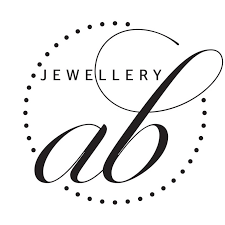Precious metals.... a guide
Share
As a self-confessed geek when it comes to jewellery, I believe that the more you know about something, the more interesting it becomes. If you agree then read on.....

YELLOW GOLD
Yellow gold has an fabulous history intertwined with its inherent beauty as much as its perceived value. The Incas referred to it as 'tears of the sun' and it has been associated with Gods and immortals ever since.
Used through the ancient world, gold was first extracted from its ore by the Egyptians around 3600 BC, and there are examples of gold jewellery from as early as 2600 BC. In 546 BC, King Croesus had improved refining techniques enough to mint the first standardised gold currency, hence the phrase 'as rich as Croesus'.
Established in 1300 at Goldsmiths Hall, London, the first hallmarking system was introduced guaranteeing the quality of precious metals. London's assay office is still located here, and to this day every piece of jewellery sold in England must be hallmarked in one of the four remaining assay offices around the country.
WHITE GOLD
White gold first became popular in the 1920s when it was introduced as a more affordable option to platinum. Since then it has remained a popular choice and is widely used across all jewellery.
White gold is achieved by combining pure gold with alloys such as silver and palladium. Traditionally, nickel was used in white gold; however, nickel is no longer used in most white gold today as it can cause allergic reactions.
As the natural colour of white gold is a greyish colour, most white gold jewellery is plated with a metal called Rhodium, which is a member of the Palladium family of metals. Rhodium is used to brighten the colour of white gold. Rhodium is very white and very hard, but it does wear, particularly on rings. It is a very common practice to have rings re-plated with Rhodium. At AB Jewellery I like to avoid plating white gold with Rhodium unless asked, this is to avoid having to keep re-plating the piece over time, which adds up, but also I think the natural colour is actually quite nice and offers a lovely contrast to silver.
ROSE GOLD
Flattering to most skin tones, rose gold first gained fame in Russia in the 19th century where it was often referred to as 'Russian gold' since they were the principal wearers of this lesser known metal at the time.
It has since, unsurprisingly, become a firm favourite amongst the fashion, jewellery and even beauty aficionados of today with designers from Diane von Fürstenberg, Alexander Wang, Charlotte Tilbury and of course, Astley Clarke, adopting it across their relative collections.
Gold Carats
Gold is graded by carats. The carat system for gold, unlike diamonds, is a method of expressing the proportion of gold to other metals in a particular alloy. Pure gold is 24ct. 22ct gold contains 22 parts of gold to 2 parts of other metals, while 9ct gold contains 9 parts of gold to 15 parts of other metals. Pure gold is a metallic yellow, and it is the presence of alloys such as copper and silver that are the principal metals used for gold alloy. Rose gold is the result of varying the proportions of copper and silver in the alloy, which results in a beautiful pinkish hue and white gold is usually mixed with either silver (in 9ct) or palladium (in 18ct). It is interesting to note that 22ct is only ever available in yellow because of the percentages of other metals that are needed to change its colour.
PLATINUM
So rare, it has been suggested that if all the mined and refined platinum were poured in to an Olympic-sized swimming pool, it would not even cover your ankles.
Derived from the Spanish term 'platina del Pinto' which literally translates as 'little silver of the Pinto river', platinum is naturally silvery white in appearance, and does not require rhodium plating like white gold.
A very dense, malleable and precious metal, platinum is resistant to corrosion and incredibly hardwearing. And while good care should be taken to prevent scratches, platinum is unique in that the metal is only displaced, not lost.
STERLING SILVER
Traditionally used to make tableware and coins, it was discovered around the 12th century that silver could in fact be be alloyed with other metals to create a more malleable material with a greater scope of use - sterling silver.
Sterling silver is an alloy of silver and other metals, usually copper. To accurately be labelled as sterling silver, the material must be 925 parts per thousand silver, with the remaining 75 parts being other metals.
As pure silver is generally too soft for manufacturing into larger objects and for everyday wear, copper is generally used to give it strength while at the same time preserving the ductility of the metal and its beauty.





